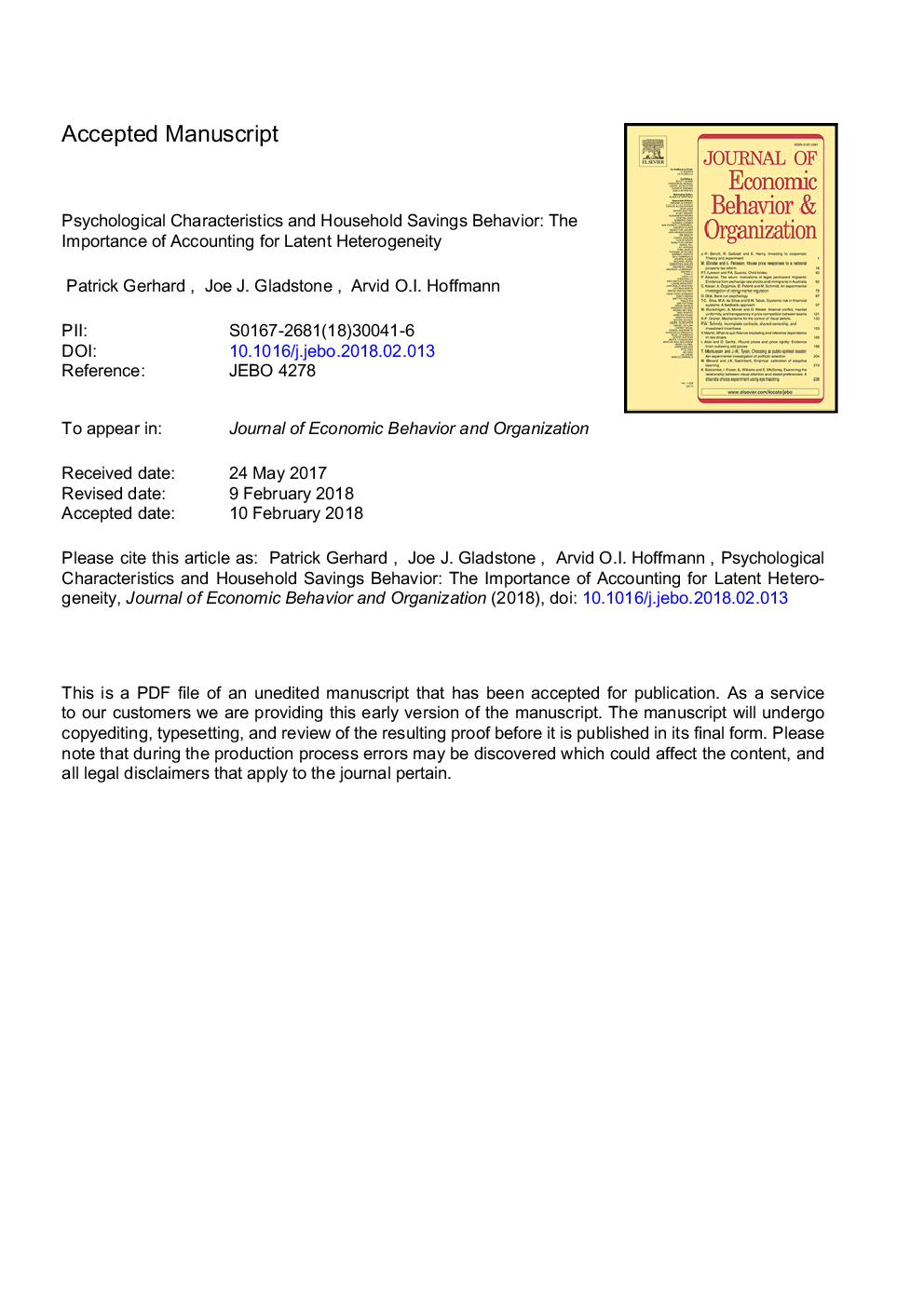| Article ID | Journal | Published Year | Pages | File Type |
|---|---|---|---|---|
| 7242608 | Journal of Economic Behavior & Organization | 2018 | 53 Pages |
Abstract
We employ a finite mixture model with maximum likelihood (ML) estimation to analyze latent heterogeneity in the relationship between psychological characteristics and household savings behavior. In a one-step ML estimation approach, we estimate a class membership model and a behavioral model of the classes jointly. Adopting this approach enables us to simultaneously assess how socio-demographic characteristics affect class membership probabilities and estimate class-specific regression coefficients, to test whether psychological characteristics predict savings behavior differently across latent classes. We apply this approach to a representative sample of UK households (nâ¯=â¯3382) and identify two different latent classes: striving versus established households. We find that the relationship between psychological characteristics and savings behavior differs across these two classes, demonstrating the importance of accounting for latent heterogeneity when studying the drivers of savings behavior. Our results have implications for policymakers attempting to improve household savings behavior.
Keywords
Related Topics
Social Sciences and Humanities
Economics, Econometrics and Finance
Economics and Econometrics
Authors
Patrick Gerhard, Joe J. Gladstone, Arvid O.I. Hoffmann,
